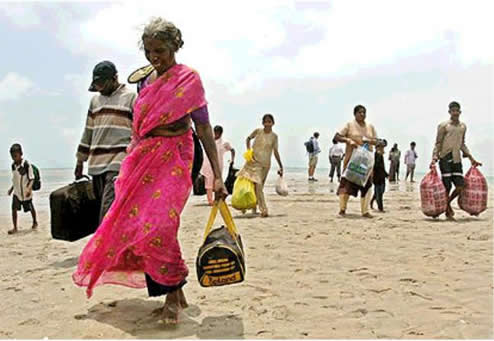Rising sea level threatens Sunderbans inhabitants
 Sunderbans (West Bengal), Dec. 3 : Rising sea levels has forced thousands of families to leave their ancestral houses and lands in the Sunderbans area of West Bengal, and many more are living in the constant fear of losing theirs.
Sunderbans (West Bengal), Dec. 3 : Rising sea levels has forced thousands of families to leave their ancestral houses and lands in the Sunderbans area of West Bengal, and many more are living in the constant fear of losing theirs.
At least 10,000 inhabitants have been turned into environmental refugees and another 70,000 are in the danger of meeting the same fate over the next thirty years, environmental experts say.
After a 10-year study in and around the Bay of Bengal, oceanographers say the sea is rising at 3.14 millimetres a year in the Sunderbans against a global average of 2 mm, threatening low-lying areas of India and Bangladesh.
Sugato Hazra, an oceanographer at Jadavpur University in Kolkata, the capital of West Bengal, who led the team that conducted the study, said an increase in the sea temperature was compounding the problems for the islanders.
"In Sunderbans the impact (of global warming) is very high because not only the coastline is retreating and we are losing islands and losing land at the rate of say, in 30 years we have lost 90 square kilometre area including two islands. A lot of people have become environmental migrants but also high intensity cyclones are increasing in Bay of Bengal because of the rise in the sea surface temperature," said Hazra, director of the School of Oceanography at the Jadavpur University.
According to a United Nations climate panel report, human activity was causing global warming and it predicted more droughts, heat-waves and rising seas.
But for the Sunderbans, made up of hundreds of islands, criss-crossed by narrow water channels and home to many of India''s dwindling tiger populations, the threat is more immediate.
At least 15 islands have been affected but erosion is widespread in other islands as well, Hazra said.
A combination of drought and then heavy rainfall this year plus increasing soil salinity have made it impossible to grow enough food to survive on traditional agriculture alone.
At least four million people live in the islands spread across 9,630 sq. km (3,700 sq. miles) of mangrove swamps. (ANI)